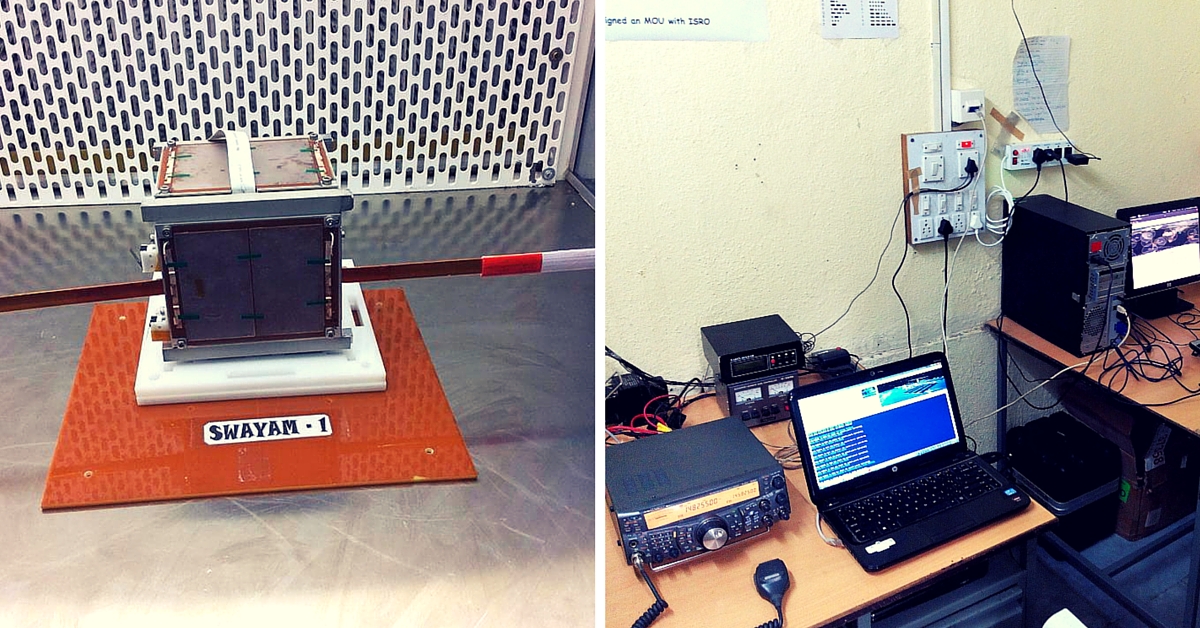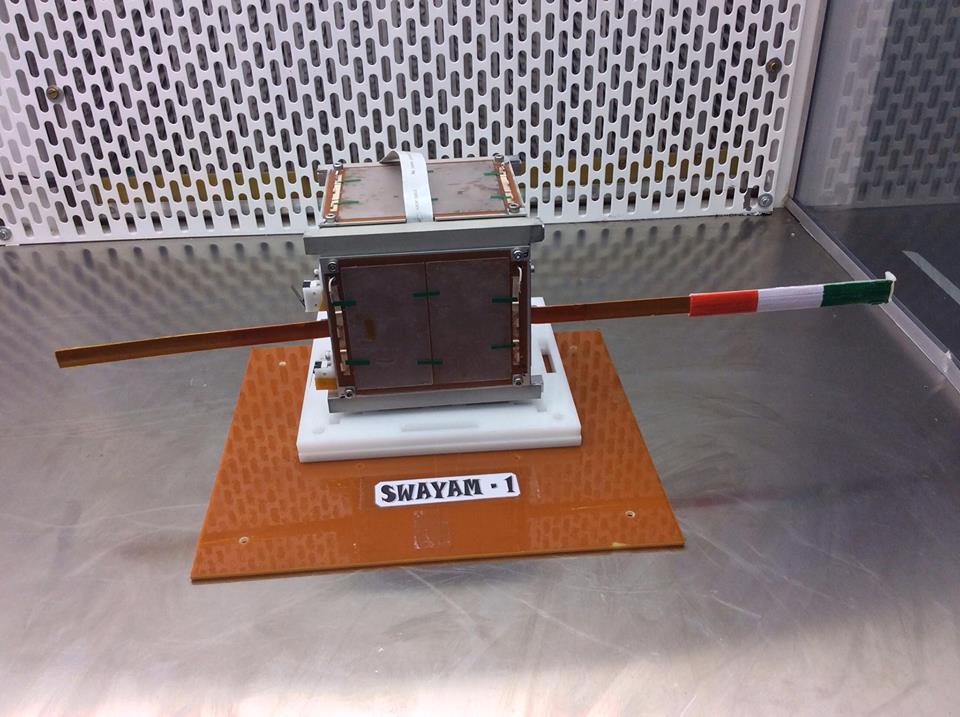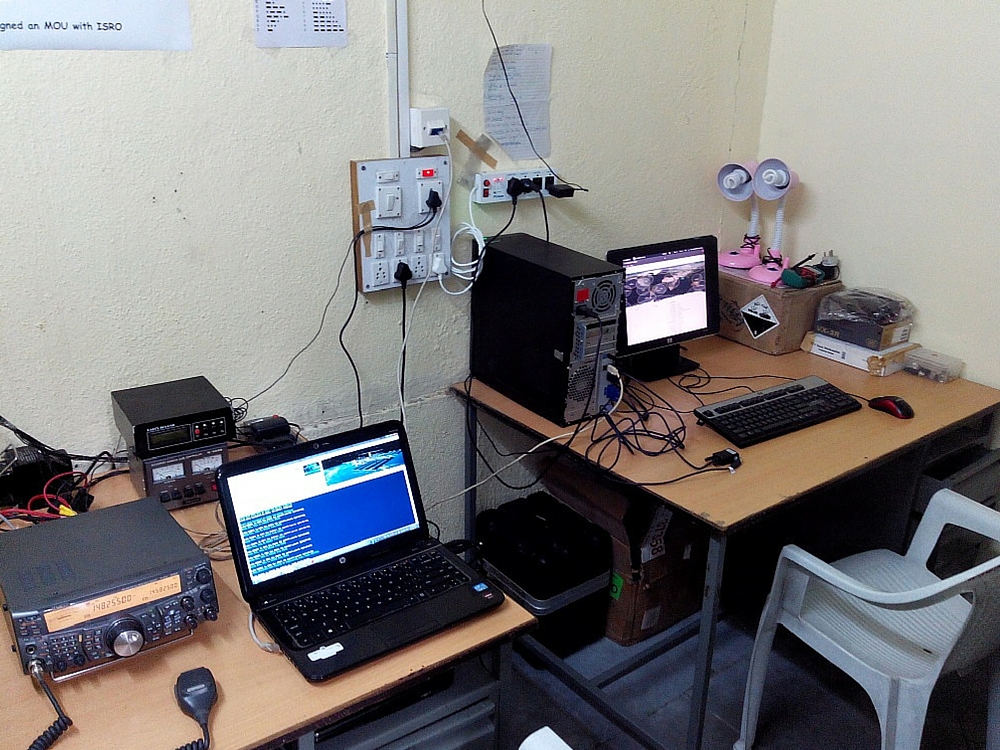This Ham Radio Club in Pune Designed the Antenna for a Student Satellite Recently Launched by ISRO
Swayam, a pico-satellite designed and built by students of College of Engineering in Pune, was launched into space on Wednesday. And the college’s HAM Radio Club has a big role to play in its operation.

Swayam, a pico-satellite designed and built by students of College of Engineering in Pune, was launched into space by ISRO on Wednesday. The college’s Ham Radio Club has a big role to play in its operation. This Amateur Radio Club (or Ham club) was established in 1986 and is the oldest technical club of College of Engineering, Pune.
The club designed Swayam’s antenna and the satellite will provide point-to-point communication for the Ham radio community.

Source: Facebook
“I was in my second year when the club made the antenna for Swayam. First, the parameters were decided and designed, and then, using software, the design was simulated to check if the result matched the needs. The club then constructed the antenna and decided on which frequency Swayam will communicate with the ground station,” current head of the club Priyanka Zambre told The Times of India.
She added that the radio communication channel is very useful during emergencies, like during the Nepal earthquake when none of the cell towers were working and all communication was made possible through radio. These stations are also useful when cellphone towers are jammed in case of emergencies.
Amateur radio, also known as Ham radio, refers to the use of radio frequency spectrum for non-commercial exchange of messages, wireless experimentation, self-training, emergency communication, etc.
The amateur radio service is established by the International Telecommunication Union (ITU) through the International Telecommunication Regulations. National governments regulate operational characteristics of transmissions and issue individual stations licenses to different clubs along with a call sign, which is a unique designation for a transmitter station.
People who have a license are called Hams and they use encrypted language to communicate. Certification is required to transmit messages in case of Ham clubs. The Amateur Station Operators Certificate (ASOC) examination conducted by the Wireless and Planning and Coordination Wing (WPC) of the ministry of communications and information technology provides the certificate.
“More than regular language, Q codes and phonetics are used in communication. For example, if I have to send a message, I say ‘CQ CQ CQ This is VU2COE’. The VU2COE is our call sign while CQ means hello,” Akshay Pampatwar, a Ham club member told TOI, adding that Morse codes are used in case of bad signals.
Some of the students have also communicated with an international space station.

Source: COEP
The club has a WhatsApp group. They meet online at 8:00 am and follow the communication guidelines as specified by the International Telecommunication Union. The club members do not talk about politics and do not advertise or share promotional content.
Swayam weighs one kg and has dimensions of 10 cm X 10 cm X 11.35 cm. It has a payload capable of half duplex communication, which will enable the satellite to host point to point messaging services – so it can receive, store and transmit messages from one corner of the globe to the other. In a half-duplex communication system, there are two channels of communication but both the parties cannot communicate with each other simultaneously. The communication has to be in one direction at a time. A device like walkie-talkie is an example of half-duplex communication. Thus, the satellite will be useful in improving communication in rural areas.
Like this story? Have something to share? Email: [email protected], or join us on Facebook and Twitter (@thebetterindia). To get positive news on WhatsApp, just send ‘Start’ to 090 2900 3600 via WhatsApp.
If you found our stories insightful, informative, or even just enjoyable, we invite you to consider making a voluntary payment to support the work we do at The Better India. Your contribution helps us continue producing quality content that educates, inspires, and drives positive change.
Choose one of the payment options below for your contribution-
By paying for the stories you value, you directly contribute to sustaining our efforts focused on making a difference in the world. Together, let’s ensure that impactful stories continue to be told and shared, enriching lives and communities alike.
Thank you for your support. Here are some frequently asked questions you might find helpful to know why you are contributing?


This story made me
-
97
-
121
-
89
-
167











